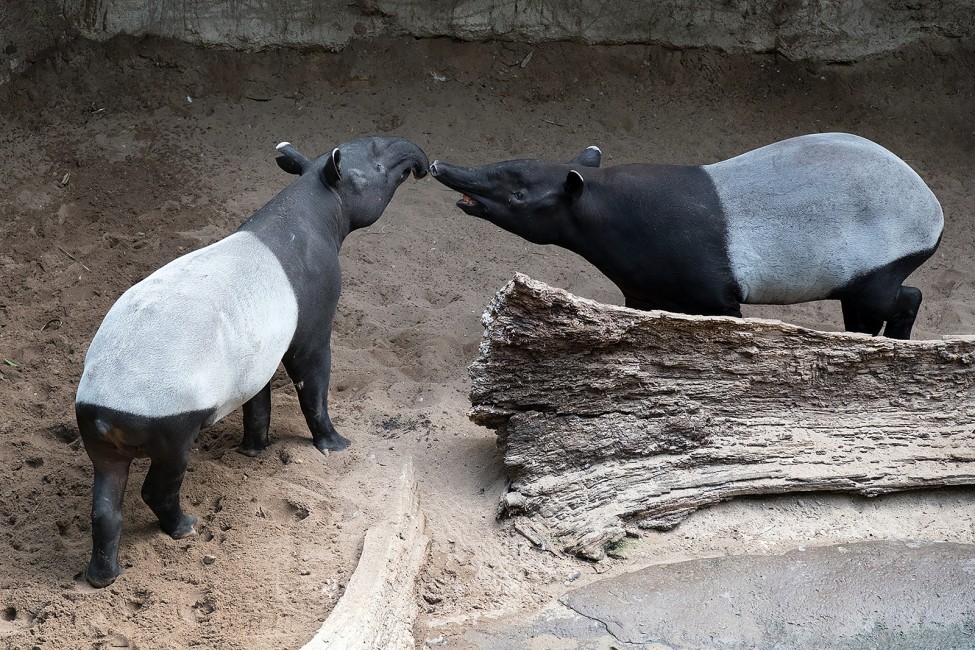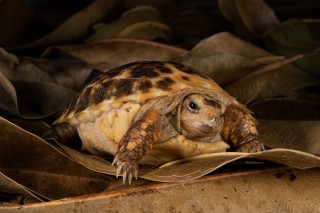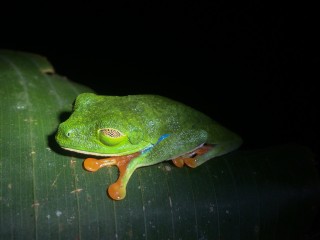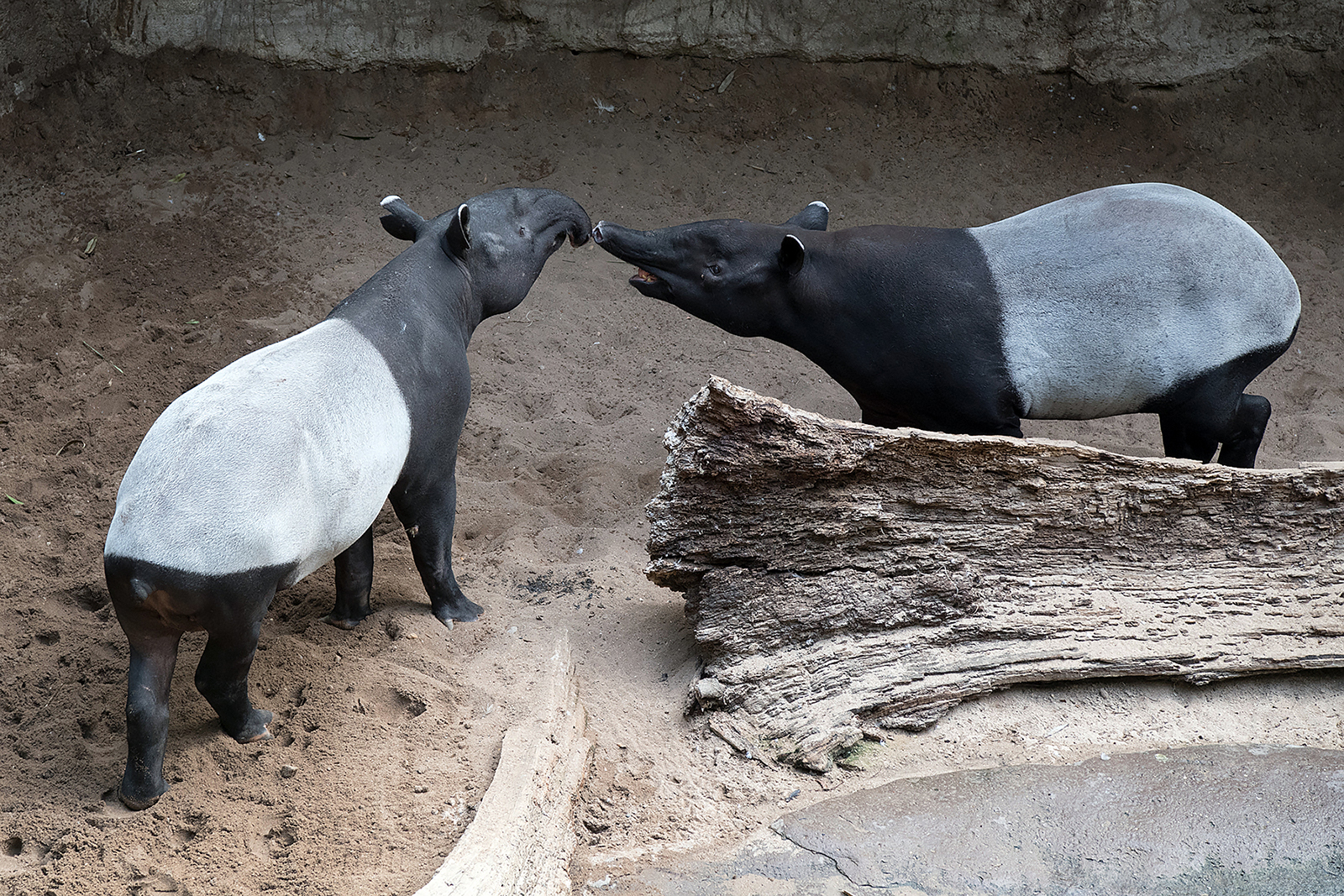
June 1, 2018
Malayan Tapir – Clever Camouflage
- as seen by -
 Kelly Marcoux
Kelly Marcoux
With their unique characteristics and oreo-like appearance, it is no wonder that Malayan tapirs are interesting to our Bronx Zoo social media followers. Kelly Marcoux, a wild animal keeper at the Bronx Zoo and lead tapir trainer, has worked with various tapir species for the past 10 years at the zoo and in Florida including hand raising a tapir calf. We asked Marcoux to share some details about this endangered mammal.
BZ: How many tapirs are there at the Bronx Zoo?
KM: Currently, we have one breeding pair of Malayan tapirs. Kris is our 25-year-old male. He is with our female, Cinta. She is 15 years old and can be found with Kris in the zoo’s Jungle World. We are hopeful that our pair will breed. Kris and Cinta (pair, above) completed an introduction period where they got to know each other. First, they had a visual introduction that went well. Then, they were together for small periods of time until they could relax all day. Now, they are on exhibit every day and can be seen napping together on their beach.
BZ: Do tapirs have fur? What does it feel like?
KM: Tapirs have hair on their bodies although it is very short so as not to slow them down during one of their favorite hobbies—swimming! They feel similar to domestic pigs.
BZ: Is their coloring a type of camouflage?
KM: There are four species of tapir. As adults, they each look different but all of their calves look very similar. Tapir babies are brown in coloration and have light spots and strips on their bodies to help them blend into dark forests dappled with sunlight. The Bronx Zoo has Malayan tapirs—the only tapir species that is color-blocked with black and gray sections thought to be camouflage. They can appear to be a rock when napping on the ground.
BZ: What do tapir eat? How do they eat?
KM: Tapirs are strictly herbivores that spend their days foraging for fallen fruits or vegetables, greens, and branches with leaves. We try to mimic their wild diet closely with a variety of fresh browse for them to snack on. During training sets, we offer their favorite treats such as bananas and cantaloupes.
Nikon D5




Leave a Comment
Jose M. (Real Estate)
September 4, 2018 at 9:20 pm
Hi Kelly, dealing with real estate for over a decade, I’m a little curious to find out what a Tapir keeper really deals with on a daily basis. What do you do to prepare for your everyday activities at the zoo?, I, on the other hand like to prepare for my daily routine by going to a Yankee game or watching the Yankees on T.V. with a nice cold Goose island in my hand. Hope to hear from you soon.